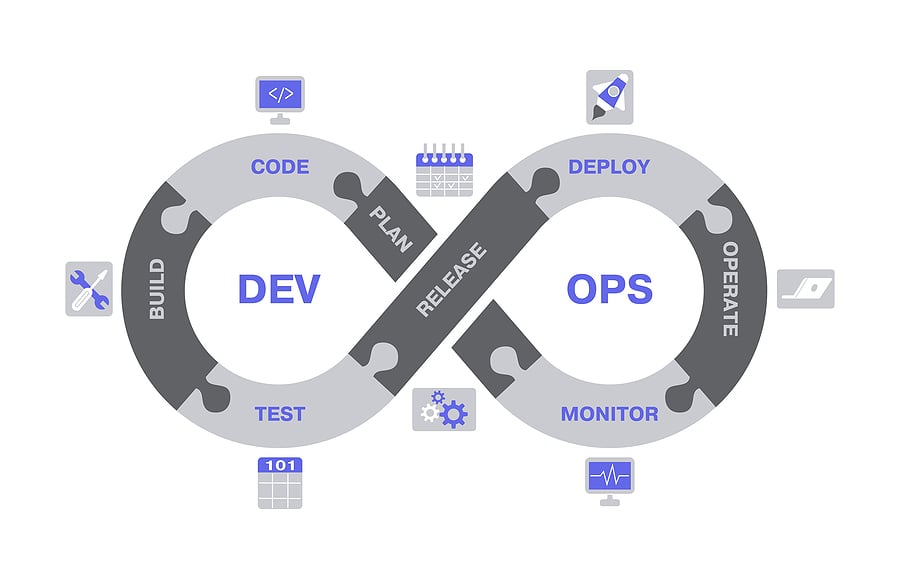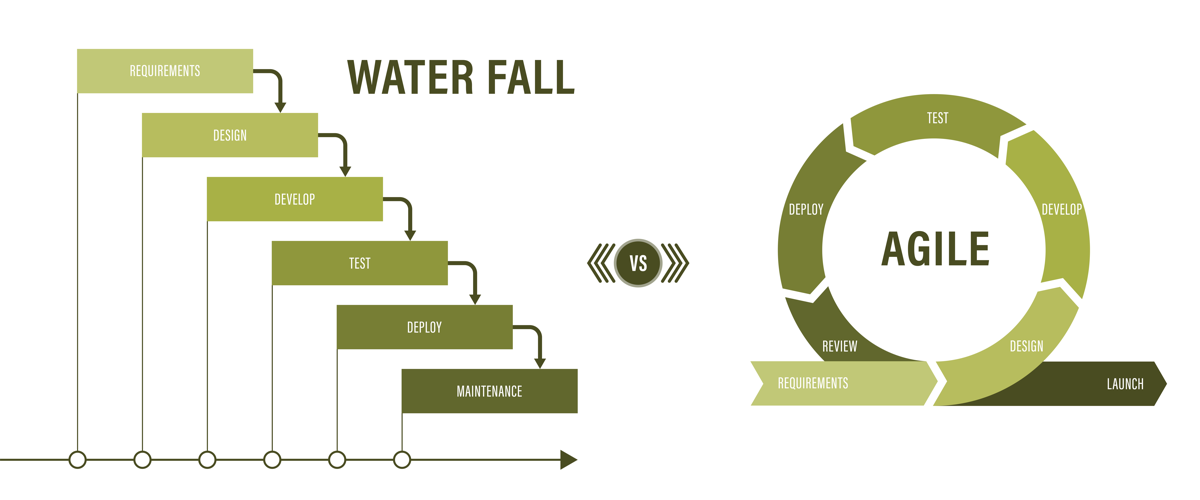Software Testing Life Cycle: Steps, Methods & Importance
7 min read
Topic:
ASP.NET Development Services
A software testing life cycle is a process that outlines the steps and requirements needed to test a piece of software. Testing is critical to the process of software development, as it helps to identify and fix any errors or bugs within the code prior to launch.
Today, web application development companies use a wide variety of technologies and processes to control their software testing lifecycle.
What is the Software Testing Lifecycle?
There are many different approaches and methodologies available for software testing, depending on your needs and preferences. However, most testing life cycles generally follow the same basic steps:
Planning and Preparation
This is the first stage of the software testing life cycle and involves creating a test plan. During the planning stage, you'll outline both the goals and the objectives of your test process, as well as any resources or tools that will be required. Who do you consider to be key stakeholders? What metrics will be used to define project success?
Analysis
During this stage, testers will analyze the software to identify any potential bugs or areas of improvement. This typically involves looking at code, as well as other aspects of the product such as design specifications & requirements, user documentation and marketing materials. Are there any existing pain points within the product that must be resolved?
Testing
After planning the test and analyzing the test, testing can begin in earnest. This stage involves executing the test cases and recording any errors or issues that are discovered.
Reporting
After testing is complete, all of the data collected during the process must be analyzed and reported on. You can use this analysis to further improve the quality of your software application before releasing it to customers or users.
Closure (and Preparation)
Finally, the software testing life cycle comes full circle. This stage involves documenting the results of the testing process and making sure that all stakeholders are up-to-date on the status of the project. Once closure has been achieved, the cycle begins anew with the next phase of software to be tested. It's important to note that there's no finality to closure; closure is simply what sets the stage for the next iteration of the custom software development process.
The software testing lifecycle is important because it helps to ensure the quality and reliability of web applications. By identifying and fixing any bugs or errors in the code, the testing process enables developers to deliver high-quality software that meets users' needs and expectations. Additionally, having a comprehensive testing life cycle in place helps to reduce costs by preventing potential problems from arising later on in the web application development process.
The process of improving upon and working on software today never really ends. Part of this is due to the proliferation of Software-as-a-Service (SaaS) solutions. But even outside of that, simply due to the ever-changing nature of technology, developers are constantly working on web applications and improving upon existing code.
What are Popular Software Testing Methodologies?
The software testing life cycle is not a static process; it is constantly evolving to meet the changing requirements of today's business software development landscape. In recent years, two major trends – DevOps and Agile – have had a significant impact on the way testing is conducted.
The DevOps Approach
DevOps, as a methodology, increases collaboration between developers and operations teams in order to deliver software faster. This approach has led to a shift in the way testing is conducted, as it is now often done on a continuous basis rather than at specific intervals. Additionally, DevOps has helped to make automated testing more prevalent, as it is essential for ensuring that code changes can be quickly and efficiently evaluated for quality.

Agile Software Development
Agile is another popular software development methodology that has had a significant impact on testing practices. Unlike traditional approaches, Agile software development focuses on rapid iteration and continuous improvement. This can lead to more frequent changes in software requirements, which requires testers to be more flexible and adaptive in their approach.
Scrum Methodology
Another related custom software development methodology is Scrum. Like Agile, Scrum emphasizes the importance of collaboration and continuous improvement. However, it also puts a strong emphasis on delivering working software at the end of each sprint, which can help to ensure that bugs are found and fixed more quickly. Scrum only really works with fast-paced, small teams, however, not large and expansive teams.
The Waterfall Model
For many years, the traditional approach to software lifecycle development was the waterfall model. This model still works for systems that need to be designed and tested in a highly secure fashion, such as systems that need to maintain compliance with rigorous and standard controls. But for SaaS solutions and modern, iterative developments, the waterfall model is considered largely obsolete.
The waterfall model, rather than being iterative, is a controlled approach to custom software development that moves the product from one stage into the next in a linear fashion. Under waterfall, each phase is completed, and only then is the next phase taken. This can reduce the potential for disruption, but it's also very inflexible. If any errors or bugs are found during the testing phase, it can be both difficult and time-consuming to then fix them. As a result, many developers are now moving towards more DevOps, Agile, and Scrum.

What is Software Integration Testing?
Integration testing is a type of software testing that focuses on verifying the interaction between different components or modules of a system. This type of testing is typically performed after unit testing and before validation testing. Integration testing can be conducted in a number of ways, but the most common approach is to use a bottom-up approach, where individual units are gradually combined to form larger assemblies.
By ensuring that all of the different components of a system work together smoothly, integration testing helps to prevent issues from arising in production environments. Additionally, this testing process can help to identify performance bottlenecks or other quality issues early on in development.
What is Software Regression Testing?
Software regression testing is a type of testing that focuses on identifying and correcting any regressions in web applications. Regressions occur when changes made to the code unintentionally introduce new errors or issues. This can have a significant impact on the quality of the software, as it may introduce defects or cause existing features to break. One of the biggest complaints that clients have with a web development company is that when they fix one problem, they then introduce a new bug in an unrelated area. Regression testing catches this problem before the client sees it.
Regression testing is typically conducted after new features or modifications have been added to the codebase, in order to verify that these changes have not introduced any new issues. Additionally, regression tests can be run on a regular basis as part of a continuous integration or delivery process.
Automated Software Testing
Automated software testing is a process of running tests using a tool or script, rather than manually executing them. This approach can help to improve the efficiency and accuracy of the testing process and shorten the time burden required to complete it. Additionally, automated testing can be used to generate comprehensive test reports that can be used to identify and resolve defects more quickly.
However, one potential drawback of automated testing is that it can be difficult to fully account for the variety of possible inputs and conditions that may occur in real-world environments. Additionally, as this testing method relies on tools or scripts, it can require both time and expertise to deploy and maintain. An automated test script is in itself a program. That program has to be designed, written and maintained and as is the case with all programs, it can contain bugs.

Software Testing Tools
Software testing tools are tools that are used to help automate or streamline the process of testing software. These tools can be used for purposes such as generating test reports, managing test cases, or automating the execution of tests. While some software testing tools are designed for specific types of testing (such as performance testing), others are more like all-in-one suites that can be used for many different types of testing.
- Automated testing tools such as Selenium or JMeter. Automated testing tools typically offer a range of features that make it easier to manage the testing process, such as test case management and reporting capabilities. Additionally, these tools can often be integrated into other development tools or CI/CD pipelines (Continuous Integration/Continuous Delivery) to streamline the testing workflow. Of course, there are also manual testing tools that test the same factors—but are controlled by the user.
- Static code analysis tools such as SonarQube that even have support for ASP.NET Web Applications. Static code analysis tools scan the source code of a software application and identify potential issues, such as coding errors or style violations. These tools can be used to help improve the quality of the codebase and reduce the number of defects that are introduced during development.
- Bug tracking and reporting tools such as Jira or Bugzilla. Bug tracking and reporting tools are designed to help teams manage defects or issues in the software development lifecycle. These tools can be used to track bugs as they are reported, assign them to different team members, or prioritize them based on their severity.
- Performance testing tools like LoadRunner or Capybara. Performance testing tools are used to evaluate the performance of a software application under different load conditions. This type of testing can help to identify issues that may only occur when the system is under stress, such as high traffic levels or large data sets.
- Code coverage analyzers such as SonarQube or Coverity. Code coverage analyzers help to identify which parts of the codebase are being tested by a particular test suite. This information can be used to improve the effectiveness of the tests and ensure that all areas of the code are adequately covered.
- Test management tools like qTest or TestRail. Test management tools help teams to organize and manage their test cases, as well as coordinate and prioritize the execution of tests. These tools can also help teams to generate comprehensive reports that evaluate the overall quality of the software application being tested.
While there is a wide range of software testing tools available, the specific tool or tools that are used will depend on the individual needs of the project and the existing technology stack. A project that requires extensive performance testing may make use of a tool like JMeter, while a project that focuses on automated testing may make use of Selenium. Ultimately, the choice of tool or tools will depend on the specific requirements of the project.
Conclusion
Overall, software testing is an essential part of the web application development process and plays a critical role in ensuring the quality and reliability of web applications. Whether you are using manual or automated testing tools, it is important to choose the approach that is best suited to your specific needs and project requirements. Choosing the right tools for your software testing process can help to improve the efficiency and accuracy of your testing, as well as reduce the amount of time required to complete it.
To find out more information about our ASP.NET software development outsourcing capabilities, or if you’d like to discuss your ASP.NET needs with Keene Systems CEO, Lance Keene click here to book a call with him. You can also download our great new eBook - Why ASP.NET Development Services Fuels Business Growth - to learn more about this essential topic.



